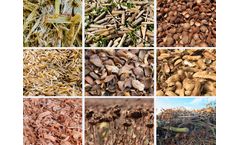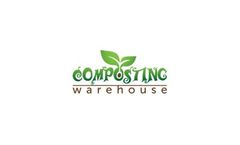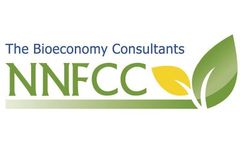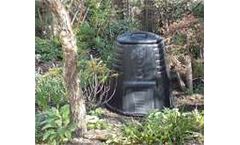Home Composting Articles & Analysis
23 articles found
As global awareness of environmental issues continues to rise, the demand for sustainable waste management solutions is more pressing than ever. In recent years, the push for sustainable practices has brought composting to the forefront of waste management solutions. Composting, the process of decomposing food waste into nutrient-rich soil, has traditionally been a slow, labor-intensive ...
Equipment: Biocomp 1. Installation date: 2012. Treatment volume: 30 m3/year. Loading: 5 days/ week. Waste: Municipal waste. ...
Equipment: Biocomp 5. Installation date: 2011. Treatment volume: 40 m3/year. Loading: 5 days/week. Waste: food scraps from school centre (1.200 ...
Equipment: Biocomp 15/45 with loading system. Installation date: 2014. Treatment volume: 120 m3/year. Loading: daily. Waste: food scraps from kitchens and restaurants at the amusement park. ...
In the pursuit of sustainable biomass management, two distinctive approaches have garnered attention: biochar production and composting. Both methods seek to convert organic matter into valuable resources, but they differ significantly in their mechanisms and outcomes. This article delves into the world of biochar production and composting, exploring the advantages of choosing biochar production ...
Regulating Compost Moisture during Hot Composting Hot composting is most effective at decomposing organic waste when moisture levels are approximately 50%. ...
The Swedish Designed Insulated Jora Composter makes composting at home fast, easy, and odor and rodent free. ...
The result is a handy tray which can go in your home compost! Bamboo-based memory foam pillows There is no doubt that all that Christmas food will warrant an afternoon nap. ...
About the Project The Regional composting facilities for organics, food and yard waste are located at the Peel Integrated Waste Management Facility and the Caledon Public Waste and Recycling Depot. The program does not replace backyard composting, but enhances it by allowing residents to compost materials that can’t be put in their backyard composter. Currently 9,000 tonnes/year ...
About the Project The Regional composting facilities for organics, food and yard waste are located at the Peel Integrated Waste Management Facility and the Caledon Public Waste and Recycling Depot. The program does not replace backyard composting, but enhances it by allowing residents to compost materials that can’t be put in their backyard composter. Currently 9,000 tonnes/year ...
Using organic gardening methods such as composting and reducing the use of fertilizers will also have a positive effect on the nearby flora and fauna. ...
Natural ventilated and aerated composting units were developed for household, fresh market and restaurant wastes. Household wastes required 8-10 weeks of composting period. The final compost product contained N : P : K content higher than organic compost standard. In aerated unit, the composting period was 30-40 days. Economical analysis suggested Benefit-Cost (B/C) ratio and Economical Internal ...
The goals of the present study were to (i) verify Parfitt’s (2005) household-level models of home composting diversion, (ii) provide additional insight into how those diversion factors were derived, (iii) extend the modelling approach to consider garden waste in residual and garden waste collections, and (iv) track the performance of compost bins ...
The solution to the garbage crisis is several solutions, one of which is worm composting.Worm composting is an excellent solution for those that do not have the space to do traditional backyard composting. As vermicomposting can be done indoors, composting continues throughout the year. Worms turn organic material into nutrient rich castings. ...
Waste that reflected the average UK composition of household waste was treated by autoclaving at the three set pressure/temperature levels of 2.7 bar/130 °C, 6.2 bar/160 °C and 15.5 bar/200 °C. The biodegradable fraction of the autoclaved household waste ('floc') was manually separated by screening and underwent characterization for its Cd, Cr, Cu, Pb, Hg, Ni, and Zn content. Autoclaving did not ...
The attenuation potential of methane (CH4) and of selected volatile organic compounds (VOCs) was compared in four types of compost materials using dynamic flow column experiments over a period of 255 d. Garden waste compost mixed with wood chips showed the highest steady-state CH4 oxidation rate (161 g m–2 d–1), followed by a commercial compost product Supermuld (110 g m–2 d–1). In the column ...
Compost making is a method of recycling whereby organic waste is broken down to organic soil with the help of oxygen demanding microorganisms. There are different ways of making compost. Some require more labour and an exact procedure has to be followed; others neglect the precise procedure, which has advantages and disadvantages. Organic material, including toilet waste, can also be recovered to ...
Untitled Document Composted material boosts sustainable growing media Composted material can be a major cost-effective component of growing media being not only a sustainable, well-structured substrate but also a source of nutrients and buffering capacity. What is composted material? In the United Kingdom, composted material is made by composting ...
Composting is a robust and cheap biological treatment method useful for all solid biodegradable waste. The performance of composting can vary substantially depending on managing conditions such as oxygen supply and compost temperature. Oxygen and temperature affects the rate of degradation and may also influence emission of NH3 and N2O. The gaseous N losses during composting from organic ...
Currently, besides of decentralised private and agricultural home-composting. 600.000 MG of separate collected organic from private and similar sources are currently treated at bioprocessing plants. ...













